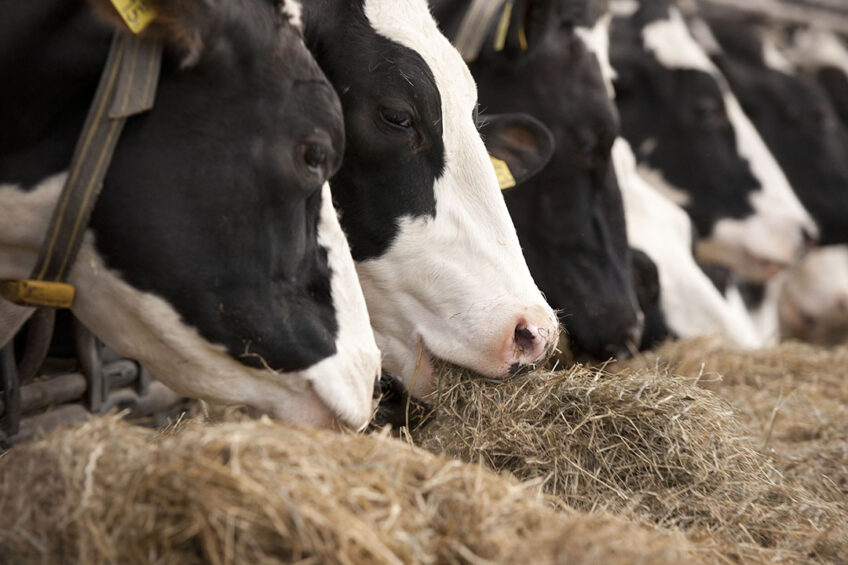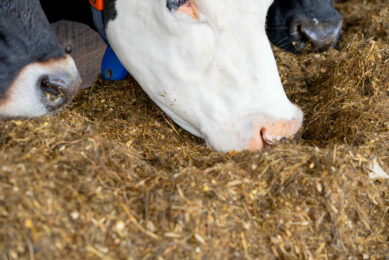Amino acids and formulation of dairy cow diets

Overfeeding crude protein results in the excess excreted largely as urinary nitrogen. Dairy farms are stepping up for more efficient use of resources and to reduce nitrogen excretion. Decreasing crude protein in the ration results in a reduction of nitrogen excretion, however, doing so without any further diet manipulation may depress yields of milk and milk protein.
Diet manipulation is a critical mitigation strategy that can help both reduce nitrogen excretion and production. Supplementation with rumen-protected amino acids may be a successful strategy for combating the negative effects of a decreased dietary protein supply on production. Methionine (Met) and lysine (Lys) have been identified as the most limiting amino acids for lactating dairy cows. The most understood and appreciated benefits of improved Lys and Met nutrition are effects on lactation performance. Increased milk component concentrations (fat and protein) are the most visible and are generally the quickest to occur.
If you imagine an iceberg, a small part of it is above the water and the large and main part is under water. So consider that the upper part that is visible is the production of milk, milk fat and milk protein. And the big part below are all the benefits that can exist for herd health (protein synthesis, liver health and antioxidant).
Balancing for Lys and Met in metabolisable protein has led to many important benefits, which include increased milk yields, increased concentrations and yields of milk protein and fat, reduced need for supplemental rumen undegradable protein for similar or greater component yields, more predictable changes in milk and milk protein production to changes in rumen undegradable protein supply, reduced nitrogen excretion per unit of milk or milk protein produced, improved health and reproduction and increased dairy herd profitability.
Balancing the dairy ration
It is so important to balance Lys/Met in the ration. To achieve this, amino acid can balance feedstuffs. For example, there is a high rate of Lys/Met in soybean meal and a high amount of Met in corn gluten. It is therefore recommended to do an NIR test on all feedstuffs.
The suggested ratio of Lys/Met varies in studies, between 2.8 to 3.1. In rations with high dosage of soybean, you can find this to be ration more than 3.1.
Also consider the concentration of Lys and Met separately. In a group of high-yielding dairy cows, it is very important to try to increase the concentration of each of these amino acids (Lys and Met) individually.
3 key strategies in using amino acid supplements
1. Reduce the feed cost, while keeping the same amount of production. In this strategy, calculate the ration of Lys/Met, add rumen protected amino acids and reduce the amount of crude protein by reducing in protein sources (note that the amount of protein should not be reduced too much. This method is recommended in rations with high amount of crude protein).
2. Increase milk production, milk fat and milk protein. In this method, you can add rumen protected amino acids to the ration without any reduction in crude protein and protein sources. Pay attention to the concentration of Lys and Met. After increasing amino acids concentration, check the Lys/Met ratio. This method is suggested for high-producing cows.
3. With no plans to increase the production or reduce the cost, but to keep the focus on herd health and fertility rate. In this method check the Lys/Met ratio and add a little bit of rumen protected Lys and Met. This method is suggested for dairy cows with low days in milk.
Finally, feed efficiency and economic production are the most important points in a dairy farm. We should always find the best ways to improve efficiency and profitability. To begin a new strategy in diet formulation or add new ingredients in rations, it is important to pay attention to costs. And to improve milk quality or milk production, pay attention to profits. In addition, we must pay special attention to the long-term consequences of that specific strategy on herd health.
Join 13,000+ subscribers
Subscribe to our newsletter to stay updated about all the need-to-know content in the dairy sector, two times a week.










